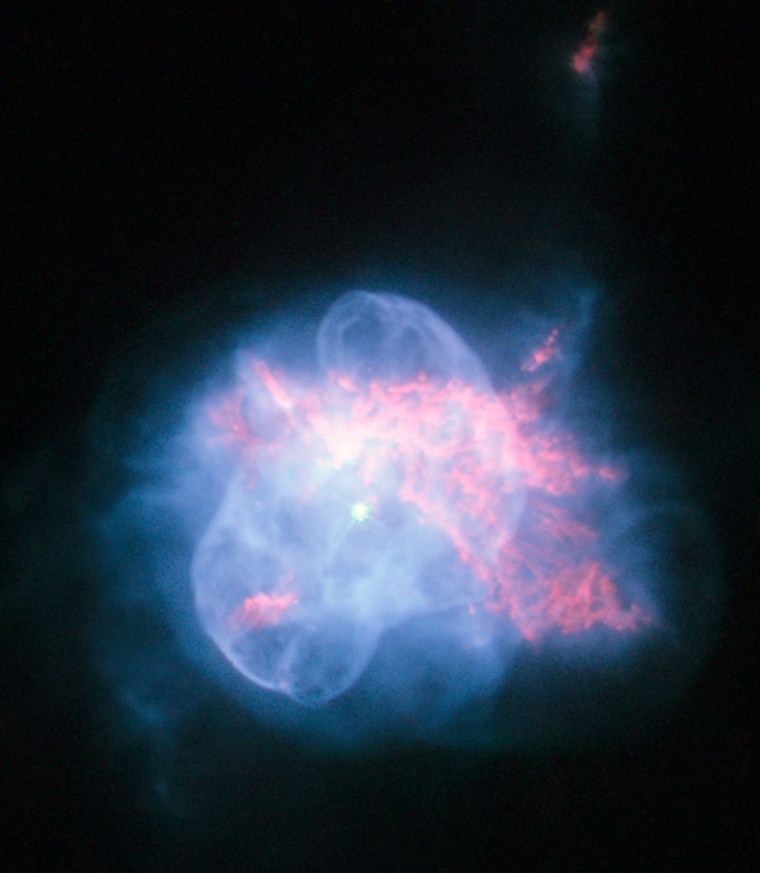The curious nebula NGC 6210 has been compared to a "turtle in space," based on the shape of its colorful clouds of glowing gas. This image, released Monday by the European Space Agency's Hubble Space Telescope team, looks inside the turtle to chart the nebula's inner region in unprecedented detail. You can see a delicate bluish bubble of gas, enclosing an amorphous, reddish gas formation with pillars and filaments sticking out. Up toward the top, there's a red blurp that's part of a jet of material stretching out from the scene. (In the earlier Hubble view, that blurp represents one of the turtle's appendages.)
NGC 6210, discovered in 1825 by the German astronomer Friedrich Georg Wilhelm Struve, is a fine example of a planetary nebula. The nebulae were called "planetary" because they looked like planetary disks through the small telescopes used in the olden days. But they actually represent the death throes of a sunlike star nearing the end of its life. When the star's fusion fuel runs out, it becomes unstable and starts throwing off its outer layers of gas. You can make out the remnant of the star as a bright spot in the middle of the colorful clouds. Astronomers say our own sun will meet a similar fate, in 5 billion years or so.
More about planetary nebulae:
- Astronomers identify 'super planetary nebula'
- New clues to amazing shapes in space
- Student 'hoots' for the Owl Nebula
- Double Hubble: Pinwheel spins with starburst
- Slideshow: Hubble's greatest hits
Connect with the Cosmic Log community by "liking" the log's Facebook page or following @b0yle on Twitter. You can also check out "The Case for Pluto," Alan's book about the controversial dwarf planet and the search for new worlds.
